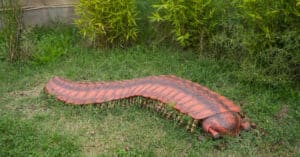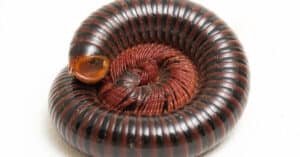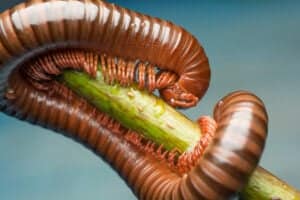Millipedes are fascinating creatures, and they can sometimes be found in your home. Having any sort of insect in your house can be frustrating, but millipedes are not actually insects. They are arthropods, belonging to the subphyla of Myriapoda, and the Diplopoda class.
Centipedes are closely related to millipedes but belong to the class of Chilopoda. An exoskeleton, a segmented body, and jointed appendages are traits shared by other arthropods. Scorpions, crabs, and insects are examples of different types of arthropods.
Millipedes are interesting creatures yet so mysterious. If you find them in your house, it is nothing to stress about. Here is everything you need to know about house millipedes and what causes their appearance.
What Attracts Millipedes Into Homes
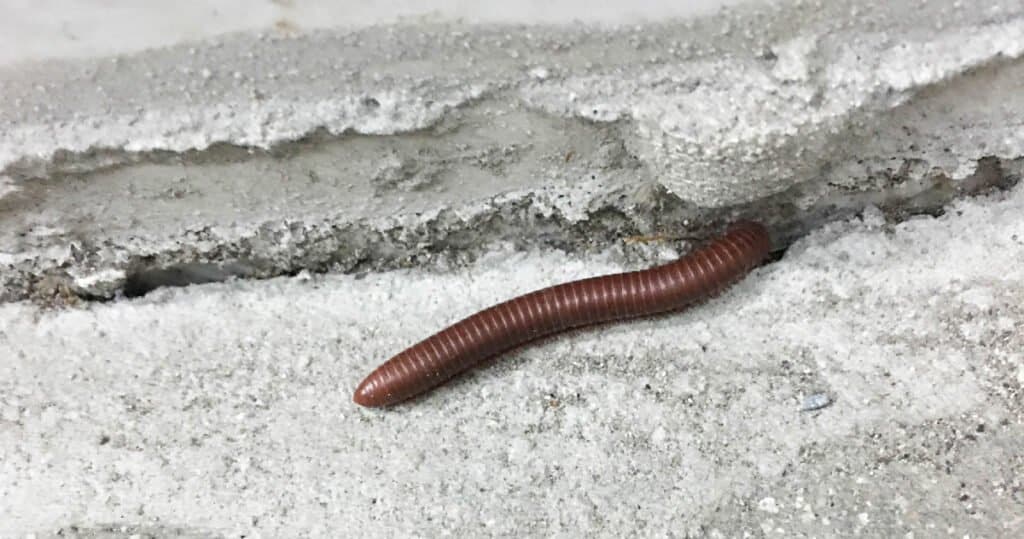
In extreme weather conditions, house millipedes find their way inside to survive.
©Vach cameraman/Shutterstock.com
Millipedes survive better outside than inside. However, extreme weather like excess rain, dry temperatures, or cold will make them move inside your home. In fall they may make their way inside to overwinter. Until winter ends, they hide in cracks, crevices, and dark areas. If the conditions are right they may be able to live in your house, but this is rare.
House millipedes prefer moist damp areas and will be more commonly found in places like bathrooms, kitchens, laundry rooms, and basements. In some cases, they can be seen in large numbers in your home. If you have millipedes inside then you will likely have them outside your home also.
Habitats Of Millipedes
Millipedes have a large range and can be found everywhere since their habitat is so common. In the U.S they are found in every state and also live in most places of the world.
Millipedes live in soil with decaying litter. They are found in areas where there are leaves, dead plant life, and mulch, as they feed on these materials. Gardens are another area where these animals thrive. If millipedes are getting into your home then it means they have a suitable habitat outside your home.
However, unlike centipedes, millipedes are not able to survive inside homes. They will die within a day of getting inside since they need moisture. Most of them will dry up fairly quickly upon getting inside. If you have grass, soil, or woodpiles next to your home’s foundation it may make it easier for them to get inside. Houses with poor drainage, soil, or unmaintained lawns next to them are more likely to have problems with millipedes.
Ways To Prevent House Millipedes
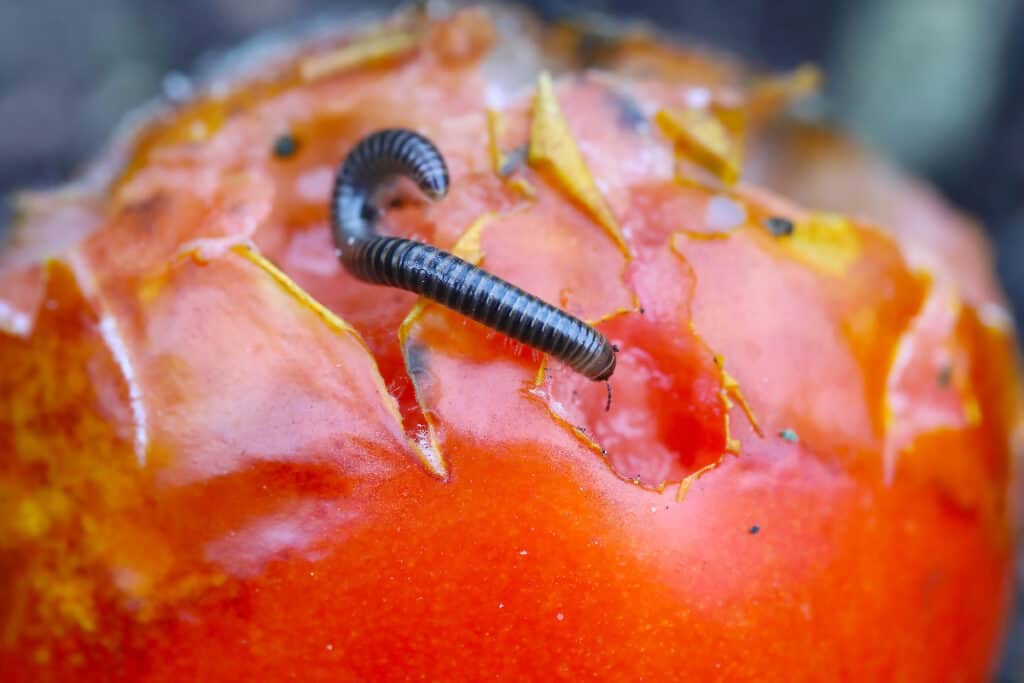
Sealing openings and cracks can help prevent millipedes from invading your home.
©Tomasz Klejdysz/Shutterstock.com
Preventing millipedes from coming inside is easy. Since house millipedes cannot maintain a population inside, stopping them from getting in is one of the best prevention methods.
Millipedes can find their way in through small holes, crevices, or pipes that lead into your home. They can come in if doors are not sealed properly or if there are any gaps they can fit into. It is possible they come inside your home in numbers of hundreds but this is only in cases of infestation. In case of an infestation, examine the foundation of your home thoroughly. It may have openings through which the animals troop into your home.
Taking care of their population on the outside of your home will also stop them from coming in. You can use pesticides, to get rid of them. Stopping millipedes from invading your home is easy when you:
- Remove moisture from your home.
- Seal any gaps that can let them in.
- Decrease their population outside your home.
Are House Millipedes Harmful
House millipedes are not harmful to your home. Unlike other pests, they do not cause any damage to your house, clothes, or food source.
Millipedes can however secrete a toxin from their body, but that is only an issue if the toxin comes in contact with your skin. Large and brighter-colored millipedes usually have more harmful toxins.
Types Of Millipedes Found In Homes
In the world, there are around 7,000 discovered millipede species. The types of millipedes that will invade your home are dependent on the area you live in. Garden millipedes (Oxidus gracilis) are the most common species to find their way into buildings and homes. Other names of this species include the greenhouse millipede, hothouse millipede, or short-flange millipede.
Garden millipedes are around 0.7 to 0.9 inches and have on average around 60 legs. They are brown with pale-colored legs, and a small antenna on their head. Garden millipedes come from Japan but have found their way into North America, South America, and Europe. Millipedes are highly adaptable since their habitat is available in all parts of the world.
Do House Millipedes Have Benefits
House millipedes do not have any benefits in your home and will not survive long if they come inside. They are more beneficial outside where they can recycle and break down organic matter. In gardens, they can cause damage. Regardless, they can be used for breaking down materials in compost piles.
On the other hand, house centipedes are different and can live comfortably in homes. House centipedes help get rid of pests like spiders, roaches, and fleas.
The photo featured at the top of this post is © Wandel Guides/Shutterstock.com
Thank you for reading! Have some feedback for us? Contact the AZ Animals editorial team.



